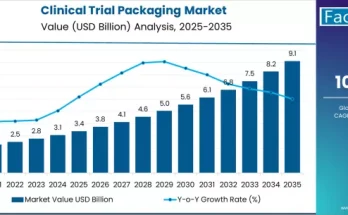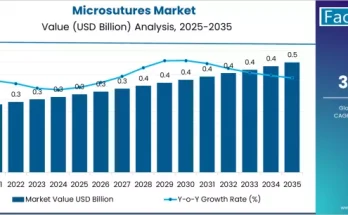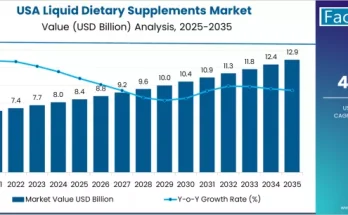The global microsurgery robot market is expected to witness significant expansion over the next decade, driven by rising demand for minimally invasive surgeries, precision in delicate procedures, and advances in medical robotics technologies. According to a recent report from Fact.MR, the market was estimated at US$ 1,171.4 million in 2024, and is forecast to grow at a compound annual growth rate (CAGR) of 7.3%, reaching approximately US$ 2,373.8 million by 2034.
Market Drivers & Growth Trends
Microsurgery robots are gaining traction due to growing prevalence of chronic diseases, aging populations, and a patient preference for minimally invasive surgical techniques that reduce recovery time, lower infection risk, and improve outcomes. As healthcare providers across specialty fields like urology, ophthalmology, otology, neurosurgery, oncology, and reconstructive surgery adopt robotic systems, the demand for microsurgery robots is accelerating.
Technological innovation is also fueling growth. Instrumentation improvements, precision motion control, better imaging and visualization, and robot-assisted surgical platforms are enhancing the accuracy of surgeries involving very small anatomical structures. In addition, favorable reimbursement policies in certain geographies and increasing healthcare infrastructure investments are helping overcome some barriers to adoption.
Key Segmentation & Regional Insights
By surgical specialty, the urology segment is forecasted to hold around 26.0% of market share by 2034, reflecting strong demand for robotic assistance in urological procedures. The neurosurgery segment is also expected to register a notable share, estimated at 17.5% by 2034. By component type, instruments dominate the market, projected to capture a share of approximately 83.8% by 2034, while accessories (such as robotic arms, visualization tools, and support systems) are expected to grow at a faster CAGR (approximately 8.1%) in the same period.
In terms of end-users, hospitals lead, and are projected to account for about 65.8% of the microsurgery robot market by 2034. Ambulatory surgical centres and specialized clinics form the rest of demand, benefitting from advances that make robots more accessible and suitable for smaller facilities.
Regional performance shows East Asia as one of the fastest-growing markets, with projected annual growth (CAGR) of about 8.7% through 2034. Within East Asia, China is expected to take a dominant position, capturing a large share of regional demand. North America remains crucial in overall market value and adoption, though its CAGR is moderate (around 4.3%) due to already high base penetration. Emerging markets in Asia-Pacific and parts of Europe and the Middle East are showing strong growth potential as their healthcare systems modernize.
Recent Developments in Microsurgery Robotics
Several recent innovations and developments are shaping the future of the microsurgery robot market. Companies are advancing next-generation platforms with improved motion control, haptic feedback, more compact robotic arms, and enhanced imaging tools. There is increasing work on making robotic systems more cost-efficient, easier to deploy, and usable in a wider range of clinical settings.
Some players are securing regulatory approvals for flexible or multispecialty robotic systems, enabling their use across different surgical specialties. Software updates enabling robotically-assisted navigation, instrument precision, and automation are helping reduce procedure times. There’s also growing interest in improving training and simulation systems to address the skill gap among surgeons, particularly for microsurgery which requires extreme precision.
Furthermore, manufacturers are focusing on making surgical robotics more accessible: reduction of robotic system size, modular and portable designs, and upgrades in accessories (imaging, supplementary tools) that can be used across different robotic platforms. Strategic partnerships between robotics firms, hospitals, and academia are supporting this innovation trajectory.
Challenges & Restraint Factors
Despite positive forecasts, the microsurgery robot market faces several constraints. High initial costs for robotic systems, including acquisition, maintenance, and training, remain significant barriers for many hospitals, especially in developing economies. Reimbursement policies are inconsistent across regions, which can limit adoption where insurance or public healthcare funding is less supportive.
There is also a shortage of skilled microsurgeons and support staff trained in robotic procedures; microsurgery demands extreme precision and specialized training. Regulatory approval processes are complex and time-consuming, particularly in stringent markets, adding to time-to-market for new robotic systems. Finally, some facilities may be reluctant to adopt robotic systems if perceived benefits are not clear in terms of cost savings, patient outcomes, or procedural efficiency.
Key Players & Competitive Landscape
The microsurgery robot market is competitive, with major medical technology companies leading in product development, innovation, and clinical deployment. Notable players profiled in the Fact.MR report include:
-
Intuitive Surgical
-
Stryker
-
Medtronic plc
-
Zimmer Biomet
-
Globus Medical, Inc.
-
Smith & Nephew plc
-
Corindus, Inc.
-
Renishaw plc
-
TransEnterix Surgical, Inc.
These companies are pursuing strategies such as expanding their instrument portfolios, improving robot ergonomics, integrating advanced imaging and AI, and securing broader regulatory approvals. Some are also investing in collaborations with hospitals and research institutes to drive adoption, real-world validation, and surgeon training. Accessory providers and component manufacturers are also playing critical roles in market growth by developing better imaging modules, control interfaces, and support devices to enhance robot capabilities.
Outlook & Strategic Implications
With the microsurgery robot market forecast to more than double between 2024 and 2034, reaching over US$ 2.37 billion, companies and investors in the medical robotics space are presented with substantial opportunity. Manufacturers that can reduce cost, improve precision, ensure surgeon usability, and navigate regulatory landscapes are likely to gain competitive edge.
Hospitals and surgical centers should plan for investment in infrastructure and training, focusing on robotic systems that offer shorter recovery times, higher precision, and demonstrable patient outcome improvement. Policymakers and regulators have a role in establishing favorable reimbursement policies, ensuring regulatory clarity, and supporting frameworks for clinician training and standardization in robotic microsurgery.
Browse Full Report: https://www.factmr.com/report/microsurgery-robot-market



